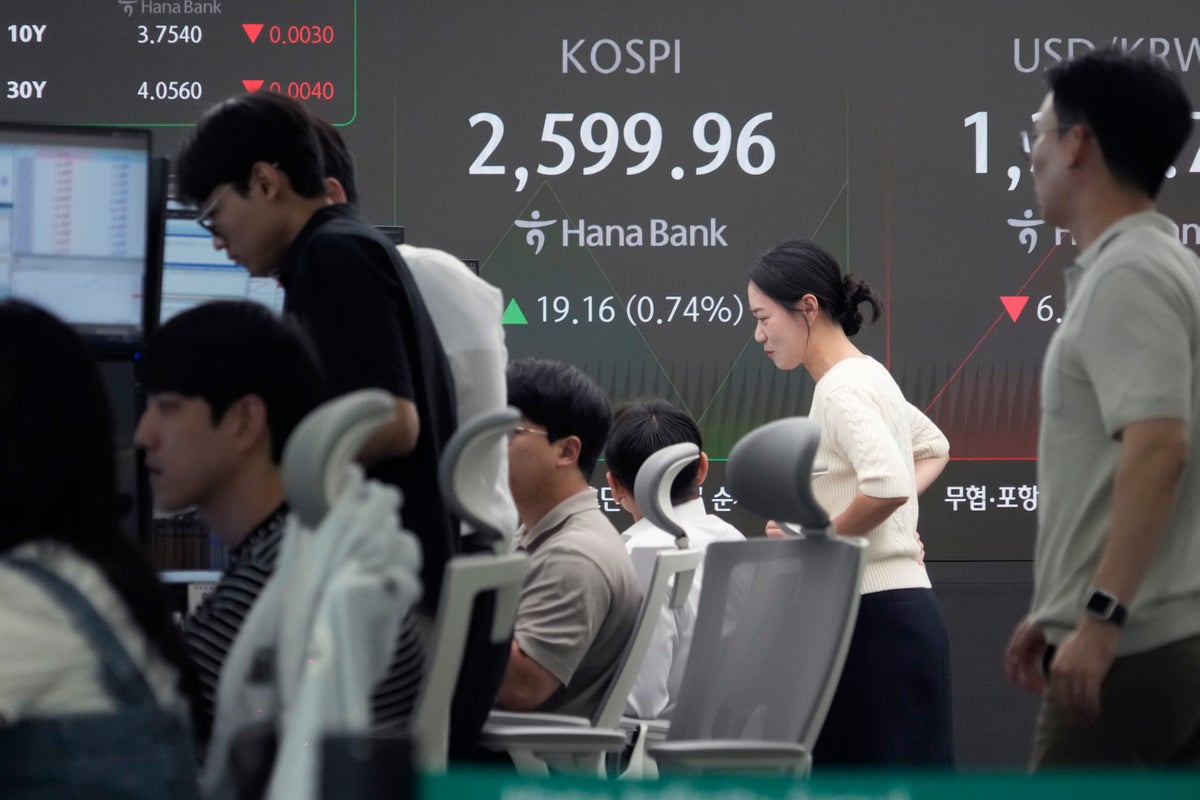
Support truly
independent journalism
Asian markets were mixed Thursday following a global sell-off a day earlier, as Wall Street declined in the technology, energy and other sectors.
Japan’s benchmark Nikkei 225 slipped 0.9% in morning trading to 36,700.19.
Data released Thursday showed Japan's wage growth remains strong, as average cash earnings in July grew 3.6% year-on-year, beating market expectations, while real earnings unexpectedly increased by 0.4% in July, increasing the likelihood of another rate hike.
The U.S. dollar was trading at 143.81 Japanese yen, fueled by the robust data.
“If global markets remain in risk-off mode — especially with commodities like oil tanking — the Fed could be pressured to pull the trigger on a larger 50-basis-points cut. This would be driven by easing inflation risks, which could send USD/JPY further south,” Stephen Innes of SPI Asset Management said in a commentary.
In South Korea, the Kospi was less than 0.1% lower to 2,579.93, as the country’s economy contracted by 0.2% in the second quarter, in line with estimates.
Hong Kong’s Hang Seng index declined 0.4% to 17,379.83 and the Shanghai Composite index was up 0.1% at 2,785.38.
Australia’s S&P/ASX 200 rose 0.1% to 7,957.40.
U.S. futures fell, while oil prices were higher.
On Wednesday, the S&P 500 fell 0.2% to 5,520.07. The Nasdaq composite shed 0.3% to 17,084.30. The Dow Jones Industrial Average, however, managed a gain of 0.1% to close at 40,974.97.
The market's latest pullback came as a government report showed job openings in the U.S. fell unexpectedly in July, a sign that hiring could cool in the coming months.
The Labor Department reported that there were 7.7 million open jobs in July, down from 7.9 million in June and the fewest since January 2021. Openings have fallen steadily this year, from nearly 8.8 million in January. But overall, the report was mixed, with hiring having risen last month.
Several other reports this week will help give a clearer picture of the economy for the Fed and Wall Street.
The Institute for Supply Management will release its services sector index for August on Thursday. The services sector is the biggest component of the U.S. economy.
The U.S. will release its monthly jobs report for August on Friday. Economists polled by FactSet expect that report to show that the U.S. added 160,000 jobs, up from 114,000 in July, and that the unemployment rate edged lower to 4.2% from 4.3%. The report’s strength, or weakness, will likely influence the Fed’s plans for how it trims its benchmark interest rate.
Traders are forecasting the Fed will cut its benchmark rate by 1% by the end of 2024. Such a move would require it to cut the rate by more than the traditional quarter of a percentage point at one of its meetings in the next few months.
In the bond market, the yield on the 10-year Treasury fell to 3.76% from 3.83% late Tuesday. That’s down from 4.70% in late April, a significant move for the bond market. The yield on the 2-year Treasury, which more closely tracks potential action from the Fed, fell to 3.76% from 3.87%.
The 10-year Treasury and 2-year Treasury are at their least inverted levels in more than two years. An inversion occurs when the shorter duration yield is higher than the longer duration yield. It has historically signaled a recession, though the current inversion has stood for more than two years amid a growing economy.
In energy trading, benchmark U.S. crude gained 14 cents to $69.34 a barrel. Brent crude, the international standard, rose 12 cents to $72.82 a barrel.
In currency trading, the euro cost $1.1077, down from $1.1082.







